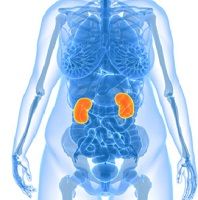Article
Investigators Test Lumasiran for Treating PH1
Author(s):
Studies are ongoing to test the safety and efficacy of treating primary hyperoxaluria type 1 patients with lumasiran.

Lumasiran, a subcutaneously-administered investigational RNAi therapeutic specially designed to decrease oxalate production, could treat patients with primary hyperoxaluria type 1 (PH1).
A team led by Tracy McGregor, director of clinical research, Alnylam Pharmaceuticals, presented during the American Society of Nephrology (ASN) Kidney Week in Washington, D.C., the results of a phase 2 open label extension that included patients who completed the phase 1/2 randomized, placebo-controlled, multicenter trial.
In the phase 1/2 trial, the investigators evaluated lumasiran in patients at least 6-years old with PH1, urinary oxalate (UOx) ≥.7mmol/1.73m2/day, and estimated glomerular filtration rate (eGFR) >45mL/min/1.73m.
The original phase 1/2 study included 20 patients with PH1 at 9 sites in 5 countries. The mean age of the patients was 14.9-years old, ranging from 6-43. The mean baseline of urinary oxalate was 1.69mmol/1.73m2/day (range: .83—2.97). As of September 2019, 20 patients were dosed in the Phase 2 open label extension for a median of 10.4 months (range: 7 – 17).
PH1 is a rare genetic disorder characterized by persistent hepatic overproduction of oxalate, which crystalizes with calcium to cause recurrent kidney stones, nephrocalcinosis, progressive renal failure, and mutli-organ damage from systemic oxalosis.
In the phase 1/2 study, the treatment demonstrated an acceptable safety profile and clinically significant urinary oxalate lowering in patients with PH1. The investigators gave each patient 1 of 3 potential dosing regimens—1 mg/kg, 3 mg/kg monthly x3 doses, or 3mg/kg every 3 months x2 doses.
Following the completion of the phase 1/2 trial, all of the patients enrolled in the open lab extension started at their original dose unless a different dose was approved prior to beginning dosing in the open lab extension.
The endpoints included safety and change in 24-hour urinary oxalate.
Continued dosing with lumasiran was well-tolerated, with no discontinuations or drug-related serious adverse events.
However, adverse events were reported in 12 of the 18 patients (66.7%), which were mild in severity and assessed as unrelated to the study drug.
Mean max reduction in UOx relative to Phase 1/2 baseline was 76% (N=19). The patients also achieved normal or near normal levels of urinary oxalate.
“To date, lumasiran has demonstrated an acceptable safety profile and clinically significant reduction in UOx in patients with PH1,” the authors wrote. “A Phase 3 program evaluating efficacy and safety of lumasiran in patients with PH1 is ongoing.”
The other trial, dubbed ILLUMINATE, consisting of 3 phase 3 studies evaluating the efficacy and safety of lumasiran in patients with PH1.
ILLUMINATE-C, the third leg of the program, includes 16 patients with PH1 with advanced renal disease (eGFR ≤45 ml/min/1.73 m2 or serum creatinine elevated for age, in patients <12 months of age) including those on dialysis. The study included 2 separate cohorts—1 with patients who do not require dialysis and 1 with patients who do require dialysis.
The primary endpoint is the percent change in plasma oxalate from baseline, which will be evaluated after 6 months of treatment. Secondary endpoints include percent change in plasma oxalate area under the curve between dialysis sessions, changes in quality of life, and plasma pharmacokinetic parameters of lumasiran.




